History
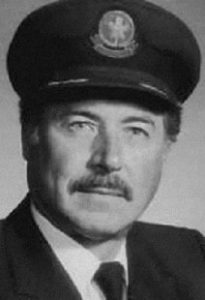
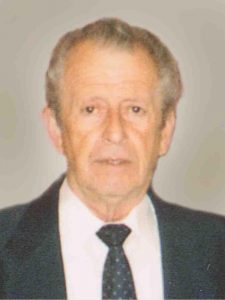 Plane crashes are always tragic events. The loss of life and property is devastating. Sometimes, however, a pilot and his crew are able to pull off a landing in unbelievable circumstances. Something like that leaves everyone from the passengers, families, the NTSB, and the world scratching their heads in disbelief. Years ago I watched a movie about just such a flight. The flight was Air Canada Flight 143. A couple of days ago, I saw that it was the 33rd anniversary of that flight which occurred on July 23, 1983, and I thought about what a miracle that whole situation was. Canada Air had just made the conversion from pounds of fuel to kilograms of fuel. Unfortunately, as is often the case in these types of conversions, things were not converting as smoothly as the airline had hoped. On 22 July 1983, Air Canada’s Boeing 767, registered as C-GAUN, c/n 22520/47, from Toronto to Edmonton where it underwent routine checks. The next day, it was flown to Montreal. Following a crew change, it departed Montreal as Flight 143 for the return trip to Edmonton via Ottawa, with Captain Robert (Bob) Pearson and First Officer Maurice Quintal at the controls. The crew had been somewhat leery of taking off with the fuel indicator taped off as inoperable. It would seem logical to most of us that Air Canada should have waited until all systems were operable before using the plane, but that was not the case.
Plane crashes are always tragic events. The loss of life and property is devastating. Sometimes, however, a pilot and his crew are able to pull off a landing in unbelievable circumstances. Something like that leaves everyone from the passengers, families, the NTSB, and the world scratching their heads in disbelief. Years ago I watched a movie about just such a flight. The flight was Air Canada Flight 143. A couple of days ago, I saw that it was the 33rd anniversary of that flight which occurred on July 23, 1983, and I thought about what a miracle that whole situation was. Canada Air had just made the conversion from pounds of fuel to kilograms of fuel. Unfortunately, as is often the case in these types of conversions, things were not converting as smoothly as the airline had hoped. On 22 July 1983, Air Canada’s Boeing 767, registered as C-GAUN, c/n 22520/47, from Toronto to Edmonton where it underwent routine checks. The next day, it was flown to Montreal. Following a crew change, it departed Montreal as Flight 143 for the return trip to Edmonton via Ottawa, with Captain Robert (Bob) Pearson and First Officer Maurice Quintal at the controls. The crew had been somewhat leery of taking off with the fuel indicator taped off as inoperable. It would seem logical to most of us that Air Canada should have waited until all systems were operable before using the plane, but that was not the case.
The flight seemed to be going smoothly, but about half way between Montreal and Edmonton, at an altitude on 41,000 feet, the aircraft’s cockpit warning system sounded, indicating a fuel pressure problem on the aircraft’s left side. Assuming a fuel pump had failed, the pilots turned it off, since gravity should feed fuel to the aircraft’s two engines. In most situations, that would have worked, but when the plane was fueled, the technician failed to accurately convert the fuel from pounds to kilograms, and the plane had run out of fuel. Running out of fuel  in a small plane, flying at much lower altitudes has been known to get people killed, but this was a Boeing 767, and it was at an altitude of 41,000 feet. This had all the makings of a disaster…but somehow, that was not what happened. In this case, the event would prove to be the finest hour for the pilot and crew.
in a small plane, flying at much lower altitudes has been known to get people killed, but this was a Boeing 767, and it was at an altitude of 41,000 feet. This had all the makings of a disaster…but somehow, that was not what happened. In this case, the event would prove to be the finest hour for the pilot and crew.
The passengers on this plane had the unusual advantage of having at the controls, a pilot who was an experienced glider pilot. Now, as you know gliders have no fuel in them. You are pulled into the air by another plane and then released to glide in for a landing. That’s an easy enough task for a trained glider pilot in a glider plane, but this was a modern day, wide body jet. The idea of gliding this plane in for a safe landing was…well, unheard of. Robert “Bob” Pearson was that pilot, and with the help of his crew and an air traffic controller, he safely glided the plane into an abandoned Royal Canadian Air Force airstrip that was being used as a drag strip…at the very moment of the landing of the plane. The men could not see that, however, until they were almost on top of the people. Thankfully, the people on the runway saw the plane and got out of the way.
The crew had hoped to make Winnipeg, but with the best glide speed and the rate of descent, there was no way. Then, Quintal remembered Gimli, and the abandoned strip became their last hope. They were too high for it, so Pearson performed a slip, which is a glide maneuver to increase drag, causing the plane to lose altitude quickly. To add to the problem, the nose gear came down, but did not lock as the rest of the gear had. Could things have been more dire? In the end, Captain Pearson executed the landing perfectly, in spite of all of the problems, and the fact that the Winnipeg Sports Car Club was on the field with everything needed to assist in 
 this emergency, the plane landed without a single death in the plane or on the ground, and the fuel starvation scenario became part of the pilots training in their simulators. The first pilots to try the program in the simulator all crashed, and believed that it was an impossible scenario, until they were told that it had happened, and that the pilot landed safely. The flight has since been dubbed the Gimli Glider. And, that’s a miracle for the books.
this emergency, the plane landed without a single death in the plane or on the ground, and the fuel starvation scenario became part of the pilots training in their simulators. The first pilots to try the program in the simulator all crashed, and believed that it was an impossible scenario, until they were told that it had happened, and that the pilot landed safely. The flight has since been dubbed the Gimli Glider. And, that’s a miracle for the books.
 If I tell you that there exists in this world, a children’s railway, would you think of the Orphan Train, bringing children out West for adoption into families there? Or would you think of some kind of forced child labor on the railways? Either way…you would be wrong. The Children’s Railway was started in Soviet Russia in 1932. The concept is a unique one. The idea was to teach teenaged children to build and run a railroad as a way of learning the railroad trade. It was an extracurricular activity that was voluntary. Things like that aren’t offered in this country…at least not that I’m aware of. Nevertheless, I think my grandfather, Allen Luther Spencer might have enjoyed that, had it been offered in his time. I also think that my cousin by marriage, James Forseen, might have loved that since he has always loved trains, and managed to land a job with the railroad. He loved them so much that he had to have one in the wedding photos when he
If I tell you that there exists in this world, a children’s railway, would you think of the Orphan Train, bringing children out West for adoption into families there? Or would you think of some kind of forced child labor on the railways? Either way…you would be wrong. The Children’s Railway was started in Soviet Russia in 1932. The concept is a unique one. The idea was to teach teenaged children to build and run a railroad as a way of learning the railroad trade. It was an extracurricular activity that was voluntary. Things like that aren’t offered in this country…at least not that I’m aware of. Nevertheless, I think my grandfather, Allen Luther Spencer might have enjoyed that, had it been offered in his time. I also think that my cousin by marriage, James Forseen, might have loved that since he has always loved trains, and managed to land a job with the railroad. He loved them so much that he had to have one in the wedding photos when he 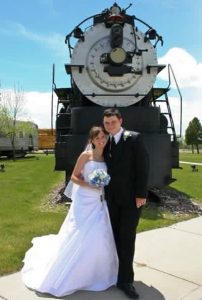 married my cousin Dani Byer Forseen. Just imagine James, if you could have worked on a railroad in high school!!
married my cousin Dani Byer Forseen. Just imagine James, if you could have worked on a railroad in high school!!
As I said, the children’s railway was a phenomenon that originated in the USSR. The first Children’s Railway opened in Gorky Park in Moscow, on July 24, 1932. It was a greatly developed activity in Soviet times. By the time the USSR broke up, there were 52 children’s railways in existence in that country. Many children’s railways are still functioning in post-Soviet states and in Eastern Europe, so obviously this is an activity that has taken off…and imagine the kids who would stay out of trouble if they fell in love with railroad work. I can envision the kids having such a great time running the railroad that they would never have the time or the inclination to get into trouble or into gangs. Their imagination would be too busy.
The children’s railway has come so far that many of them exhibit railway technology not seen anymore on the  main lines and they can be seen as heritage railways. Even though a few exceptions exist, most of the children’s railways that were built in the communist block have a track gauge of at least 600 mm (1 feet 11 5/8 inches) and can carry full size narrow gauge rolling stock. Of course, for the sake of safety and training purposes, the children’s railways are all run under the supervision of adult railroad workers, but what better way for things to be done. The children’s railways in existence these days are mostly for the purpose of tourism, but I suppose that if necessary, they could be used for other reasons. Whatever their purpose is today, I think the Children’s Railways sound like a very cool idea.
main lines and they can be seen as heritage railways. Even though a few exceptions exist, most of the children’s railways that were built in the communist block have a track gauge of at least 600 mm (1 feet 11 5/8 inches) and can carry full size narrow gauge rolling stock. Of course, for the sake of safety and training purposes, the children’s railways are all run under the supervision of adult railroad workers, but what better way for things to be done. The children’s railways in existence these days are mostly for the purpose of tourism, but I suppose that if necessary, they could be used for other reasons. Whatever their purpose is today, I think the Children’s Railways sound like a very cool idea.
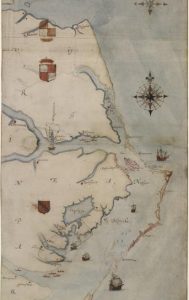 When I think of a lost people, I think of a tribe in Africa or somewhere very isolated, but I never think of someplace in America! Nevertheless, it happened right here in America. Of course, it was a long…long time ago. It was long before people could easily track someone down. The year was 1587, the day was July 22. That was the day when the new colony arrived in Roanoke, North Carolina, which was colonial Virginia. On August 18, 1587, the first English baby to be born in the Americas, Virginia Dare was born. The group had been dispatched by Sir Walter Raleigh, and was led by John White, who by the way, was Virginia Dare’s grandfather. Upon their arrival, they found nothing of the English garrison that had gone ahead, except one skeleton. The people really didn’t want to stay there after that, but the fleet commander, Simon Fernandez would not let them return to the ship, and the ships sailed with the promise of new supplies to come.
When I think of a lost people, I think of a tribe in Africa or somewhere very isolated, but I never think of someplace in America! Nevertheless, it happened right here in America. Of course, it was a long…long time ago. It was long before people could easily track someone down. The year was 1587, the day was July 22. That was the day when the new colony arrived in Roanoke, North Carolina, which was colonial Virginia. On August 18, 1587, the first English baby to be born in the Americas, Virginia Dare was born. The group had been dispatched by Sir Walter Raleigh, and was led by John White, who by the way, was Virginia Dare’s grandfather. Upon their arrival, they found nothing of the English garrison that had gone ahead, except one skeleton. The people really didn’t want to stay there after that, but the fleet commander, Simon Fernandez would not let them return to the ship, and the ships sailed with the promise of new supplies to come.
John White was not allowed to stay, and so returned to England on August 27, 1587…vowing to return in three months time. That was about the time of the Spanish Armada attack in 1588, which delayed White’s return to Roanoke. White tried desperately to return to the little colony for the next three years. When he was finally able to get there, he came rushing onshore, only to find that the colony was gone. 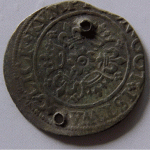
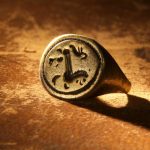 Among those missing was the little girl, Virginia Dare, White’s granddaughter. They had arrived on what would have been her third birthday…August 15. Whites return was delayed because of the Anglo-Spanish war, and the Spanish ships that robbed the expedition of the supplies they were taking over to the colonists. It is suspected that the colony disappeared during that war, but there is no clear clarification as to where they went or who took them.
Among those missing was the little girl, Virginia Dare, White’s granddaughter. They had arrived on what would have been her third birthday…August 15. Whites return was delayed because of the Anglo-Spanish war, and the Spanish ships that robbed the expedition of the supplies they were taking over to the colonists. It is suspected that the colony disappeared during that war, but there is no clear clarification as to where they went or who took them.
There has been much speculation as to the fate of the Roanoke Lost Colony, but the sure fate of the settlers left behind is unknown and the colony is known as the “Lost Colony” of Roanoke to this day. Over the years numerous attempts have been made to find the Lost Colony, including the Lost Colony DNA Project started in 2005. Recent investigations speculate that the Lost Colony relocated to where the Chowan River meets the Albemarle Sound in present day Bertie County, North Carolina. Nevertheless, recent discoveries found 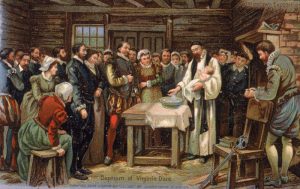 European objects in the Hatteras Island area, including a sword hilt, broken English bowls, and a fragment of a slate writing tablet still inscribed with a letter. These could point to the presence of the colonists on Hatteras Island, some 50 miles southeast of their settlement on Roanoke Island. There were also some found at a site on the mainland 50 miles to the northwest. Some people have thought that the Native Americans took the people or at least assimilated them into their tribe, because there are in some of that modern day tribe of people with strangely gray eyes. I suppose we will never really know the reality of what happened, but I would rather think that the Native Americans took them in, than to think that they were killed.
European objects in the Hatteras Island area, including a sword hilt, broken English bowls, and a fragment of a slate writing tablet still inscribed with a letter. These could point to the presence of the colonists on Hatteras Island, some 50 miles southeast of their settlement on Roanoke Island. There were also some found at a site on the mainland 50 miles to the northwest. Some people have thought that the Native Americans took the people or at least assimilated them into their tribe, because there are in some of that modern day tribe of people with strangely gray eyes. I suppose we will never really know the reality of what happened, but I would rather think that the Native Americans took them in, than to think that they were killed.
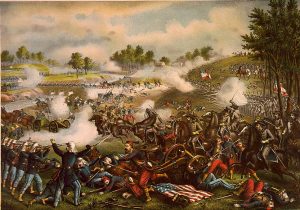 People don’t think of war as being something they want to send their children into…much less witness one themselves, or even one battle of a war. War really isn’t a spectator sport, after all. Nevertheless, there was a time, when people didn’t really seem to realize that. Early in the Civil War, the Union military command believed that the Confederate army could be easily defeated, and that the war would be over very quickly and with very little loss of life.
People don’t think of war as being something they want to send their children into…much less witness one themselves, or even one battle of a war. War really isn’t a spectator sport, after all. Nevertheless, there was a time, when people didn’t really seem to realize that. Early in the Civil War, the Union military command believed that the Confederate army could be easily defeated, and that the war would be over very quickly and with very little loss of life.
In July of 1861, the folly of that overconfidence was sharply pointed out when General Irvin McDowell led a premature offensive into northern Virginia. He set out in search of the Confederate forces, leading 34,000 mostly inexperienced troops, who were also poorly trained, toward the railroad junction of Manassas, which is just 30 miles from Washington DC. General Beauregard of the Confederate forces, was alerted of the advance, and so brought together 20,000 troops there. He was soon joined by General Joseph Johnston, who brought 9,000 additional men by way of railroad.
On the morning of July 21, 1861, the people of the area heard of the opposing forces, and that a battle was about to break out in their vicinity. Hundreds of civilian men, women, and children turned up to watch the first major battle of the Civil War. The fighting commenced with three Union divisions crossing the Bull Run stream. The Confederate flank was driven back to Henry House Hill. General Beauregard had set up a strong defensive line backed up by a brigade of Virginia infantry under General Thomas Jackson. From a concealed slope, Jackson’s men began firing a series of Federal charges. It was this plan that gave Jackson his famous nickname Stonewall. The Confederate cavalry under J.E.B. Stuart captured the Union artillery, and General Beauregard ordered a counterattack on the exposed Union right flank. The rebels came charging down the hill, yelling furiously, and General McDowell’s line was broken, forcing his troops in a hasty retreat across Bull Run. The retreat soon became an all out run for their lives, and supplies littered the road back to Washington. Union forces endured a loss of 3,000 men killed, wounded, or missing in action while the Confederates suffered 2,000 casualties in the bloody battle.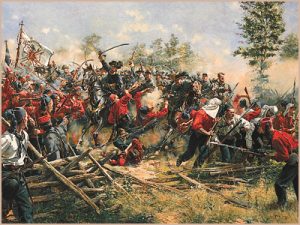
The horrific battle not only the frightened spectators at Bull Run, but the United States government in Washington as well, which was faced with an uncertain military strategy that would obviously need to change, if the South was to be stopped. I have a hard time understanding how the people could possibly have thought this was something to go out and watch…much less to take their children to. Of course, these days I think we have seen so much war on television, that no one in their right mind would go to watch a battle and no one would take their kids, because war is not a spectator sport.
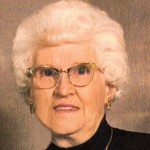
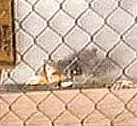 Yesterday, while watching television, one of the shows I like to watch…Why Planes Crash…came on. This particular episode included the cause of Flight 232 in Sioux City, Iowa. This particular crash had an enormous impact on my own life, and that of my mother’s family. It was the one in which my Great Aunt Gladys Pattan Byer Cooper was killed. I have watched the footage numerous times, as well as the episode of Why Planes Crash that contained the answer, but it seems that each time, I learn something new about the crash. I’m not sure why some of the information didn’t stick in my head the first time it was aired, because it most certainly was information that was pointed out. Nevertheless, it didn’t stick in my head that first time or even the subsequent times…until now.
Yesterday, while watching television, one of the shows I like to watch…Why Planes Crash…came on. This particular episode included the cause of Flight 232 in Sioux City, Iowa. This particular crash had an enormous impact on my own life, and that of my mother’s family. It was the one in which my Great Aunt Gladys Pattan Byer Cooper was killed. I have watched the footage numerous times, as well as the episode of Why Planes Crash that contained the answer, but it seems that each time, I learn something new about the crash. I’m not sure why some of the information didn’t stick in my head the first time it was aired, because it most certainly was information that was pointed out. Nevertheless, it didn’t stick in my head that first time or even the subsequent times…until now.
I have often wondered why it takes so long to find the cause of some of the plane crashes…especially the ones where there were survivors and where the black box was so easily found, but sometimes it just does take time. One of the possibilities is that some of the tiny parts, or even large parts of the plane seem to be missing. That was the case with Flight 232. The entire fan disk of its tail mounted General Electric CF6-6 engine failed and disintegrated. I’m sure that the investigators knew that something happened to the fan disk, but without it,  they could not say what happened. The initial explosion that was heard was over Alta, Iowa…about 60 miles from their final crash site in Sioux City, Iowa. This was the point when the fan disk disintegrated. Now, 60 miles may not seem like such a large distance, but add to that the fact that the plane circled around trying to burn up it’s fuel, and trying to stay upright, and the fact that when the fan disk disintegrated, it was traveling at a tremendous amount of speed. In the end, the fan disk was discovered quite by accident three months later, on October 10, 1989, when Janice Sorenson, a farmer harvesting corn near Alta, Iowa, felt resistance on her combine, and after getting out to investigate, discovered most of the fan disk with a number of blades still attached partially buried in her cornfield. The rest of the fan disk and most of the additional blades were located later in the harvest. That would be the point that the investigation could finally bring to a conclusion the actual cause of the crash that had taken my great aunt’s life.
they could not say what happened. The initial explosion that was heard was over Alta, Iowa…about 60 miles from their final crash site in Sioux City, Iowa. This was the point when the fan disk disintegrated. Now, 60 miles may not seem like such a large distance, but add to that the fact that the plane circled around trying to burn up it’s fuel, and trying to stay upright, and the fact that when the fan disk disintegrated, it was traveling at a tremendous amount of speed. In the end, the fan disk was discovered quite by accident three months later, on October 10, 1989, when Janice Sorenson, a farmer harvesting corn near Alta, Iowa, felt resistance on her combine, and after getting out to investigate, discovered most of the fan disk with a number of blades still attached partially buried in her cornfield. The rest of the fan disk and most of the additional blades were located later in the harvest. That would be the point that the investigation could finally bring to a conclusion the actual cause of the crash that had taken my great aunt’s life.
That event has always been a little fuzzy for me. Not the crash, or even the loss of Aunt Gladys, but the whole investigation. For years I’m not sure I really wrapped my mind around the cause of the crash…at least not until I saw the animated reenactment of the crash. Then it became crystal clear what had happened. The breaking 
 up of the fan disk, caused by a crack that happened when the disk was made, due to impurities in the Titanium, brought down the plane. The crew, including a flight instructor who happened to be onboard, did an amazing job in their efforts not to crash. In the end, it would be on slight dip of the wind caused by a failed hydraulic system that would cause it to tap the ground and cartwheel the plane. It was the event that would forever change our family, from one who had never had someone killed in an airplane crash, to one the had. We would never forget it, and we deeply miss Aunt Gladys to this day.
up of the fan disk, caused by a crack that happened when the disk was made, due to impurities in the Titanium, brought down the plane. The crew, including a flight instructor who happened to be onboard, did an amazing job in their efforts not to crash. In the end, it would be on slight dip of the wind caused by a failed hydraulic system that would cause it to tap the ground and cartwheel the plane. It was the event that would forever change our family, from one who had never had someone killed in an airplane crash, to one the had. We would never forget it, and we deeply miss Aunt Gladys to this day.
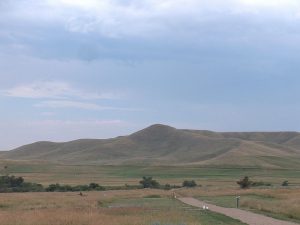 Anyone who has lived in Wyoming for any length of time knows that the state is dotted with forts from the old west. These forts shaped the state by protecting the inhabitants from the Indians…or at least the did their very best to do so. One such fort that didn’t work out so well was Fort Phil Kearney. Construction on the fort began Friday July 13, 1866 by 18th Infantry Companies A, C, E and H of the 2nd Battalion, under the direction of the regimental commander and Mountain District commander Colonel Henry B Carrington. The post was named for Major General Philip Kearny, who was a popular figure in the American Civil War. The fort was located along the east side of the Bighorn Mountains in what is now northern Johnson County, approximately 15 miles north of Buffalo, Wyoming. Along with Fort Reno and Fort C F Smith, Fort Phil Kearney was established along the Bozeman Trail in the Powder River Country at the height of the Indian Wars to protect prospective miners from the Indians while they were
Anyone who has lived in Wyoming for any length of time knows that the state is dotted with forts from the old west. These forts shaped the state by protecting the inhabitants from the Indians…or at least the did their very best to do so. One such fort that didn’t work out so well was Fort Phil Kearney. Construction on the fort began Friday July 13, 1866 by 18th Infantry Companies A, C, E and H of the 2nd Battalion, under the direction of the regimental commander and Mountain District commander Colonel Henry B Carrington. The post was named for Major General Philip Kearny, who was a popular figure in the American Civil War. The fort was located along the east side of the Bighorn Mountains in what is now northern Johnson County, approximately 15 miles north of Buffalo, Wyoming. Along with Fort Reno and Fort C F Smith, Fort Phil Kearney was established along the Bozeman Trail in the Powder River Country at the height of the Indian Wars to protect prospective miners from the Indians while they were 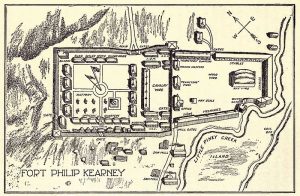 traveling north from the Oregon Trail to what is now Montana.
traveling north from the Oregon Trail to what is now Montana.
By fall, Carrington had erected an imposing symbol of American military power. A tall wooden wall surrounded a compound the size of three football fields. Inside the walls, Carrington built nearly 30 buildings, including everything from barracks and mess halls to a stage for the regimental band. Only the most massive and determined Indian attack would have been capable of taking Fort Phil Kearny. Unfortunately, Carrington’s mighty fortress had one important flaw…a failure to plan really. The nearest stands of timber were several miles away. To obtain the wood essential for heating and further construction, a detachment had to leave the protection of the fort every day. The Indians naturally began to prey on these Wood Trains. In December, a massive Indian ambush wiped out a force of 80 soldiers under the command of Captain William Fetterman.
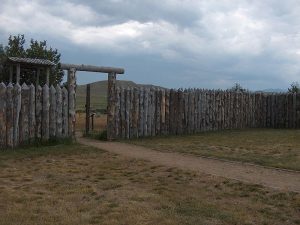
Fort Phil Kearney was named the “hated post on the Little Piney” by the Indians, and it played an important role in Red Cloud’s War. The area around the fort was the site of the Fetterman Fight in 1866 and the Wagon Box Fight in 1867. By 1868, the Union Pacific Railroad had reached far enough west that emigrants could reach the Montana gold fields through what is now Idaho, which made the dangerous Bozeman Trail an unnecessary route. All three forts along the trail were abandoned as part of the Treaty of Fort Laramie in 1868. Shortly after the treaty, Fort Phil Kearney was burned to the ground by Cheyenne Indians. I guess they really did hate it.
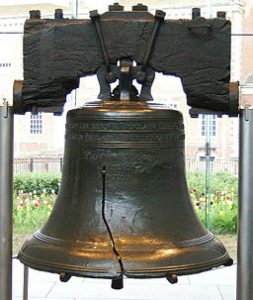 Everyone has heard of the Liberty Bell. The bell was ordered in 1751, to commemorate the 50th anniversary of Pennsylvania’s original constitution. The Pennsylvania Provincial Assembly ordered the 2,000 pound copper and tin bell. The bell was placed in the Pennsylvania State House, which is now known as Independence Hall. The bell rang out summoning citizens to the first public reading of the Declaration of Independence, by Colonel John Nixon. The document was adopted by delegates to the Continental Congress meeting in the State House on July 4th, however, the Liberty Bell, inscribed with the Biblical quotation, “Proclaim Liberty Throughout All the Land unto All the Inhabitants Thereof,” was not rung until the Declaration of Independence was returned from the printer on July 8th.
Everyone has heard of the Liberty Bell. The bell was ordered in 1751, to commemorate the 50th anniversary of Pennsylvania’s original constitution. The Pennsylvania Provincial Assembly ordered the 2,000 pound copper and tin bell. The bell was placed in the Pennsylvania State House, which is now known as Independence Hall. The bell rang out summoning citizens to the first public reading of the Declaration of Independence, by Colonel John Nixon. The document was adopted by delegates to the Continental Congress meeting in the State House on July 4th, however, the Liberty Bell, inscribed with the Biblical quotation, “Proclaim Liberty Throughout All the Land unto All the Inhabitants Thereof,” was not rung until the Declaration of Independence was returned from the printer on July 8th.
The bell was made of inferior materials, and cracked during the first test. It was recast twice and finally hung from the State House steeple in June 1753. The bell was rung on special occasions, such as when King George III ascended to the throne in 1761, and to call the people together to discuss such important things as the controversial Stamp Act of 1765. With the outbreak of the American Revolution in April 1775, the bell was rung to announce the battles of Lexington and Concord. Of course, the most famous time it was rung was July 8, 1776, when it summoned Philadelphia citizens for the first reading of the Declaration of Independence.
When the British were advancing on Philadelphia in the fall of 1777, the bell was removed and hidden in Allentown to protect it from being melted down by the British to be used for cannons. Following the defeat of the British in 1781, the bell was returned to it’s place in Philadelphia which was the nation’s capital from 1790 to 1800. In addition to marking important events, the bell was used as a part of the celebrations such as George Washington’s birthday on February 22, and Independence Day on July 4. In 1839, bell was first given it’s name when it was coined the Liberty Bell in a poem.
As to the crack that finally made the Liberty Bell unsuitable for ringing, there has been some dispute. It was 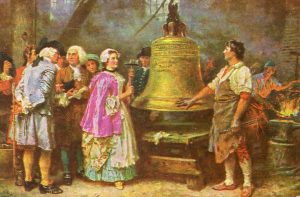 finally agreed upon that the bell suffered a major break while tolling for the funeral of the chief justice of the United States, John Marshall, in 1835, and in 1846 the crack expanded to its present size while in use to mark Washington’s birthday. After that date, it was decided that the bell was unsuitable for ringing, but it was still ceremoniously tapped on occasion to commemorate important events. On June 6, 1944, when Allied forces invaded France, the sound of the bell’s dulled ring was broadcast by radio across the United States. In 1976, the Liberty Bell was moved to a new pavilion about 100 yards from Independence Hall in preparation for America’s bicentennial celebrations. The Liberty Bell will always be a symbol of patriotism and liberty in my mind.
finally agreed upon that the bell suffered a major break while tolling for the funeral of the chief justice of the United States, John Marshall, in 1835, and in 1846 the crack expanded to its present size while in use to mark Washington’s birthday. After that date, it was decided that the bell was unsuitable for ringing, but it was still ceremoniously tapped on occasion to commemorate important events. On June 6, 1944, when Allied forces invaded France, the sound of the bell’s dulled ring was broadcast by radio across the United States. In 1976, the Liberty Bell was moved to a new pavilion about 100 yards from Independence Hall in preparation for America’s bicentennial celebrations. The Liberty Bell will always be a symbol of patriotism and liberty in my mind.
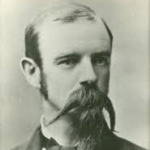 In my many hikes to the Harney Peak lookout, I have noticed many times the marker there for Dr Valentine McGillycuddy. I suppose that the main reason it has stuck in my head is because of my grandfather, George Byer, who used to call our house and ask for Mrs McGillycuddy. We always knew it was Grandpa, but we went along with the joke anyway. Of course, Grandpa’s Mrs McGillycuddy was fictional, while Valentine McGillycuddy was a real person. I did some research a few years ago, and found out that Valentine McGillycuddy was the first white man to climb all the way to the top of Harney Peak. Many have followed in his footsteps, myself and my husband included. Harney Peak, so named in the late 1850s by Lieutenant Gouverneur K. Warren in honor of General William S. Harney, who was commander of the military in the Black Hills area. The Lakota Sioux Indians called it Hinhan Kaga, which means “Making of Owls” in English. I think I like that name.
In my many hikes to the Harney Peak lookout, I have noticed many times the marker there for Dr Valentine McGillycuddy. I suppose that the main reason it has stuck in my head is because of my grandfather, George Byer, who used to call our house and ask for Mrs McGillycuddy. We always knew it was Grandpa, but we went along with the joke anyway. Of course, Grandpa’s Mrs McGillycuddy was fictional, while Valentine McGillycuddy was a real person. I did some research a few years ago, and found out that Valentine McGillycuddy was the first white man to climb all the way to the top of Harney Peak. Many have followed in his footsteps, myself and my husband included. Harney Peak, so named in the late 1850s by Lieutenant Gouverneur K. Warren in honor of General William S. Harney, who was commander of the military in the Black Hills area. The Lakota Sioux Indians called it Hinhan Kaga, which means “Making of Owls” in English. I think I like that name.
Dr McGillycuddy first came to the Black Hills with the Jenny-Newton Party. His mission was to survey and map 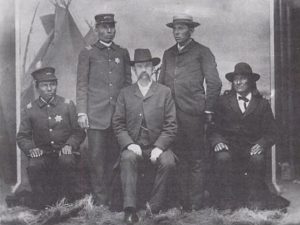
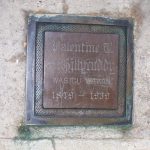 the Black Hills, and to confirm that gold had been discovered there. It was during this excursion that he climbed Harney Peak. There had been other white men to climb the mountain, including General George Custer, but they all stopped just short of the peak, because it was to difficult to make it…something I think I can relate to. McGillycuddy angled a felled tree into a crevice in the granite, and made his way to the very top. I can totally feel his elation and sense of accomplishment, since I have felt the same way myself. My guess is that it would not be the last trip he made to the top either. That mountain has a way of calling you back for a second and even third or more visits.
the Black Hills, and to confirm that gold had been discovered there. It was during this excursion that he climbed Harney Peak. There had been other white men to climb the mountain, including General George Custer, but they all stopped just short of the peak, because it was to difficult to make it…something I think I can relate to. McGillycuddy angled a felled tree into a crevice in the granite, and made his way to the very top. I can totally feel his elation and sense of accomplishment, since I have felt the same way myself. My guess is that it would not be the last trip he made to the top either. That mountain has a way of calling you back for a second and even third or more visits.
McGillycuddy became a friend to Crazy Horse, and in fact was with him when he died after being stabbed at Fort Robinson, Nebraska in 1877. After that time, the Lakota Sioux named McGillycuddy Tasunka Witko Kola, 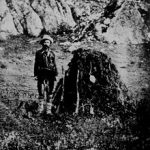 which means “Crazy Horse’s Friend” in English. Other Native Americans named McGillycuddy Wasicu Wakan, which means “Holy White Man” in English. Dr Valentine McGillycuddy did lead a very amazing life. His first wife died, and he moved to San Francisco to continue his medical practice. There he married Julia Blanchard. After he passed away in 1939, Julia wrote a book about his life called “McGillycuddy, Agent” which was how he signed his name during his favorite role in life. He was a friend to the Indians, and did his best to educate them by building a school for the children. He was a calming influence on the relationship between the Indians and the White Man. It is quite fitting then that his ashes be entombed on the mountain that he loved. It gives a totally different feeling to the little plaque that is there…if one researches it.
which means “Crazy Horse’s Friend” in English. Other Native Americans named McGillycuddy Wasicu Wakan, which means “Holy White Man” in English. Dr Valentine McGillycuddy did lead a very amazing life. His first wife died, and he moved to San Francisco to continue his medical practice. There he married Julia Blanchard. After he passed away in 1939, Julia wrote a book about his life called “McGillycuddy, Agent” which was how he signed his name during his favorite role in life. He was a friend to the Indians, and did his best to educate them by building a school for the children. He was a calming influence on the relationship between the Indians and the White Man. It is quite fitting then that his ashes be entombed on the mountain that he loved. It gives a totally different feeling to the little plaque that is there…if one researches it.
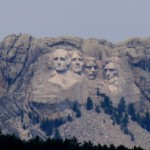 For me, there is no more perfect way to celebrate Independence Day that to come to the Black Hills of South Dakota. I can’t think of a more patriotic place that is close enough to my home in Wyoming to be able to go to each year. The Black Hills is a shrine to patriotism. Mount Rushmore…home to the faces of four presidents, George Washington, Thomas Jefferson, Theodore Roosevelt, and Abraham Lincoln…brings home that spirit of patriotism that lives inside me. I love going to Mount Rushmore, and every time I go, I feel a sense of awe. These great men did the things necessary to make our country great. We don’t often think about the sacrifice a president made, but George Washington was a great soldier before he was president. He, along with the help of an ancestor of my husband, Bob’s, Henry Knox worked out a strategy to win the Revolutionary War, thereby winning our independence. Thomas Jefferson was the author of the Declaration of Independence. Abraham Lincoln was the
For me, there is no more perfect way to celebrate Independence Day that to come to the Black Hills of South Dakota. I can’t think of a more patriotic place that is close enough to my home in Wyoming to be able to go to each year. The Black Hills is a shrine to patriotism. Mount Rushmore…home to the faces of four presidents, George Washington, Thomas Jefferson, Theodore Roosevelt, and Abraham Lincoln…brings home that spirit of patriotism that lives inside me. I love going to Mount Rushmore, and every time I go, I feel a sense of awe. These great men did the things necessary to make our country great. We don’t often think about the sacrifice a president made, but George Washington was a great soldier before he was president. He, along with the help of an ancestor of my husband, Bob’s, Henry Knox worked out a strategy to win the Revolutionary War, thereby winning our independence. Thomas Jefferson was the author of the Declaration of Independence. Abraham Lincoln was the  man responsible for ending slavery in the United States, and Teddy Roosevelt was chosen because of his contributions to business, conservation and the creation of the Panama Canal. These were four men who saw just how great this nation could be, and who worked to make sure that it always would be a great Constitutional Republic.
man responsible for ending slavery in the United States, and Teddy Roosevelt was chosen because of his contributions to business, conservation and the creation of the Panama Canal. These were four men who saw just how great this nation could be, and who worked to make sure that it always would be a great Constitutional Republic.
For most of us, the Independence Day celebration would not be complete without a grand fireworks display. I have been to a lot of fireworks displays in my lifetime, but few can match the display that takes place every year in Custer, South Dakota. They start by doing the roll call of the states. I have been amazed over the years that almost every state is represented. Then the fireworks begin, with synchronized music, that is the best mix I have ever heard. Of course, every patriotic song in existence is sung, and the display seems to go on for hours. By the time the evening is over, you truly feel like you have celebrated our nation’s birth. I always walk away feeling more patriotic than when I arrived…if that’s possible.

I believe that the United States of America is one of the greatest countries on earth, and in the past few years, people have been trying to tear it down, and make us believe that we are not a great nation with great people. I don’t like that. I don’t like that our government tries to take away our rights, and tries to change the fabric of this nation into a nation of whiney babies that I hardly recognize. I hate to make Independence Day a story about the election, but it’s time to “Make America Great Again.” It’s time to fight for our Constitution, and the freedoms it provides. If we don’t fight for those rights now, they will be gone forever, and with them would go the nation we love. I pray that you all have a very safe and happy Independence Day!!
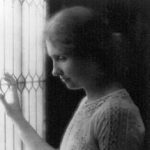 As a young girl, I read a book about Helen Keller. I became very interested in her life. She was truly inspirational to me. It wasn’t really about the fact that she was deaf, blind, and mute, but rather about how she overcame all of those obstacles to become a really great woman in history. Of course, the truth is that without another girl who was losing her own sight, Helen Keller might well have gone on with her life in the almost barbaric way she was being allowed to grow up. Helen’s family had no idea how to raise her. In fact, they had no idea what to do with her at all. She was completely out of control. She threw tantrums when she didn’t get her way. She ate off of everyone’s plates…completely destroying the meal that was on there until she found what she wanted, and then moving on to the next plate. I’m sure that there was never a peaceful meal in that house, much less a peaceful day. Every time Helen didn’t like how things were going, the screaming began, and the family cringed.
As a young girl, I read a book about Helen Keller. I became very interested in her life. She was truly inspirational to me. It wasn’t really about the fact that she was deaf, blind, and mute, but rather about how she overcame all of those obstacles to become a really great woman in history. Of course, the truth is that without another girl who was losing her own sight, Helen Keller might well have gone on with her life in the almost barbaric way she was being allowed to grow up. Helen’s family had no idea how to raise her. In fact, they had no idea what to do with her at all. She was completely out of control. She threw tantrums when she didn’t get her way. She ate off of everyone’s plates…completely destroying the meal that was on there until she found what she wanted, and then moving on to the next plate. I’m sure that there was never a peaceful meal in that house, much less a peaceful day. Every time Helen didn’t like how things were going, the screaming began, and the family cringed.
 It all started when she was a little baby. She had a very bad fever. They weren’t sure Helen would survive. Nevertheless, she did, but the damage was done. Before long they realized that she couldn’t hear, or see, and the few words she had learned soon left her, because she was locked inside herself. She was living in quiet darkness. The only things she knew were the smells of her family, food cooking, and her way around the house. Her parents felt sorry for her, so they gave her what she wanted. Soon all it took to make them give in, was a tantrum, but Helen was getting older, and she was out of control. In fact, when her younger sister was born, she dumped her out of a cradle that she wanted to use for her doll. Her parents decided that something had to be done, or she would have to be placed in a home for the mentally insane.
It all started when she was a little baby. She had a very bad fever. They weren’t sure Helen would survive. Nevertheless, she did, but the damage was done. Before long they realized that she couldn’t hear, or see, and the few words she had learned soon left her, because she was locked inside herself. She was living in quiet darkness. The only things she knew were the smells of her family, food cooking, and her way around the house. Her parents felt sorry for her, so they gave her what she wanted. Soon all it took to make them give in, was a tantrum, but Helen was getting older, and she was out of control. In fact, when her younger sister was born, she dumped her out of a cradle that she wanted to use for her doll. Her parents decided that something had to be done, or she would have to be placed in a home for the mentally insane.
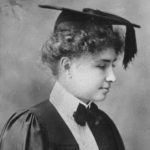 In a last ditch effort, they hired Annie Sullivan, who was a teacher and losing her sight too. She could teach, and she was stubborn. Both were things Helen needed desperately. It was no easy task, but really by trial and error, Annie developed a way to get things across to the girl. She used finger spelling into Helens hand. But she couldn’t talk to her, so she had to keep doing the same things until it finally clicked. On that amazing day, Helen’s real education could begin. It had been a long struggle, including fighting Helen’s family, but Annie won, and that meant Helen won. She went on to be a successful author and later a speaker. Helen learned the sounds by feeling Annie’s throat. She was truly an amazing woman. Today is the 136th anniversary of Helen Keller’s birth. She passed away on June 1, 1968.
In a last ditch effort, they hired Annie Sullivan, who was a teacher and losing her sight too. She could teach, and she was stubborn. Both were things Helen needed desperately. It was no easy task, but really by trial and error, Annie developed a way to get things across to the girl. She used finger spelling into Helens hand. But she couldn’t talk to her, so she had to keep doing the same things until it finally clicked. On that amazing day, Helen’s real education could begin. It had been a long struggle, including fighting Helen’s family, but Annie won, and that meant Helen won. She went on to be a successful author and later a speaker. Helen learned the sounds by feeling Annie’s throat. She was truly an amazing woman. Today is the 136th anniversary of Helen Keller’s birth. She passed away on June 1, 1968.

